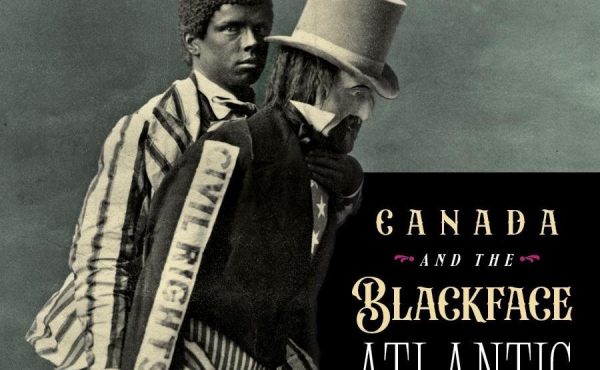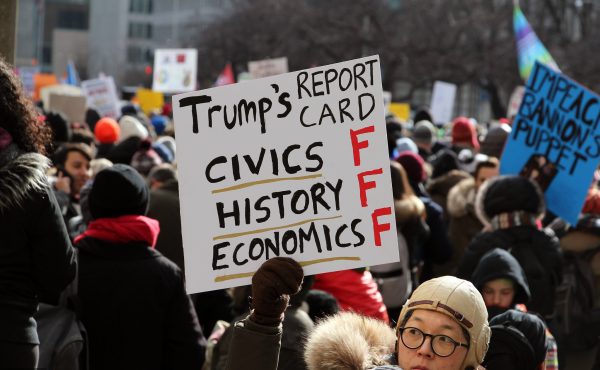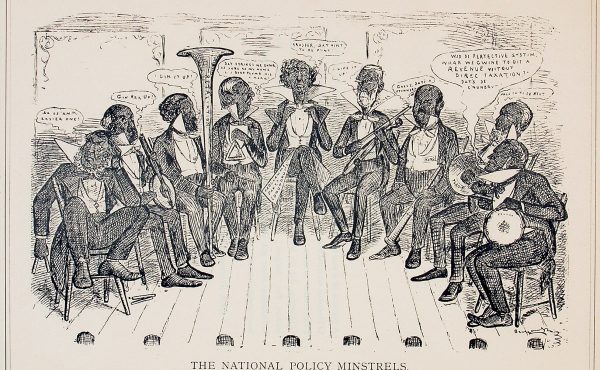LONDON, ONT. — After a summer spent in Toronto where art festivals abound, I headed down to a city whose arts festival is a recent and exciting addition to its culture. Now in its third year, the London Ontario Live Arts festival is a free, four-day-long event that showcases local and international visual art and music. Open to all ages, LOLA gives people from all over London a reason to wander through their city’s center as they experience the festival’s musical performances, light projections on building facades, and installation works scattered throughout the downtown core.Many of the featured works raise questions about the ways in which the city’s public spaces have been conventionally valued and used. Kelly Mark’s The Band, for instance, promotes a fictional rock band in images posted on billboards and in light boxes, illustrating the absurdity of branding and the potential for spaces currently used for advertising.
From what I gathered in my conversations with festival goers, Londoners are generally not engaged with their downtown. Suburban sprawl has been on the rise since the city joined with surrounding municipalities in the early 1960s, providing businesses with incentive to start up on the outskirts of the city. Consequently, there is little drawing London residents into the city center, and the conveniences and joys of spending time in a high-density urban environment do not necessarily play a part in their daily lives.
The fact that LOLA is situated in downtown London seems to play a particularly important part in the lives of the city’s youth. During the festival I met LOLA volunteer Emily Bennett, a born and bred Londoner who left town as soon as she was able, and has spent the past four years living in Montreal. As a teenager, she rarely went downtown with her friends for fun since there were few places that welcomed people of her age group. Bars required identification, and there was a shortage of cafes and outdoor public spaces. Like many other people I met, Emily was excited to see an event that was drawing London’s youth downtown and to the city’s beautiful Victoria Park, where events have generally not exceeded the parameters of the established local craft sales.
Although this was my first trip to London and I didn’t have much to compare the festival ambiance to, it was clear that the city was abuzz. “I think this years festival was a roaring success,” says festival director Andrew Francis. “It’s confirmation that London is a place that will welcome and embrace contemporary artistic expression.” Unlike any festival in London’s past, LOLA’s art is accessible, stimulating, and is an invitation to explore.




3 comments
Sounds like a great time.
As far as engagement with downtown goes, I think people see what they want to see–a lot of the residents who complain about London’s downtown are the ones who don’t spend any time there. I grew up in the suburbs in London and wasn’t very engaged with the city, but when I returned after university, I lived closer to downtown, was able to walk and ride my bike everywhere, and found more opportunities for involvement than I had time for. Critical Mass, numerous theatres, reading series…it was all there, just on a smaller scale.
I think the problem with downtown areas in cities like London is exactly what 8sml mentions – people who don’t live right there don’t spend any time there. When people don’t spend any time downtown, the businesses there fail. And then there’s less of a reason to go downtown, etc., the whole vicious cycle thing. I’m not from London (although I did live there for 5 or so years as a really young kid), but from Sarnia, where I think the downtown area has a lot of the same problems that London has, although on a smaller scale since Sarnia is much smaller. I went to London for Lola this weekend, and something that really struck me about downtown, and that reminded me of home, was how many GORGEOUS spaces there were downtown that were empty. Some of the most beautiful storefronts I’ve seen in a really long time, with nothing in them. And some of those spaces were used by the Lola artists in really fantastic ways, drawing attention both to the pieces and to the spaces that are going unnoticed and unused in London. I certainly enjoyed the music this past weekend, but I was much more struck by all the beautiful spaces downtown, both those used and empty. I hope Lola continues to be so successful and to revive downtown London….
My wife grew up in the suburbs of London but downtown was the place to go on Saturday night. That was in the 80s, and it was downhill from there. As new movie theatres, bars and restaurants sprang up in the ‘burbs, she and her friends stopped going downtown, as did most others. Even in the mid-90s it was still pretty vibrant, but the closing of the downtown mall (which had an Eaton’s and a Simpson’s at one time), the opening of new malls in the suburbs and the decline of the commercial strip on Dundas St. gave suburban people no reason to go downtown. Add in the loss of jobs at London Life and Canada Trust, and the downtown office crowd stopped shopping and eating at the restaurants. However it appears that things are starting to look up, there have been some new downtown residential buildings put up, and proposals for more, plus the new Labatt Centre draws people downtown for hockey games and concerts.